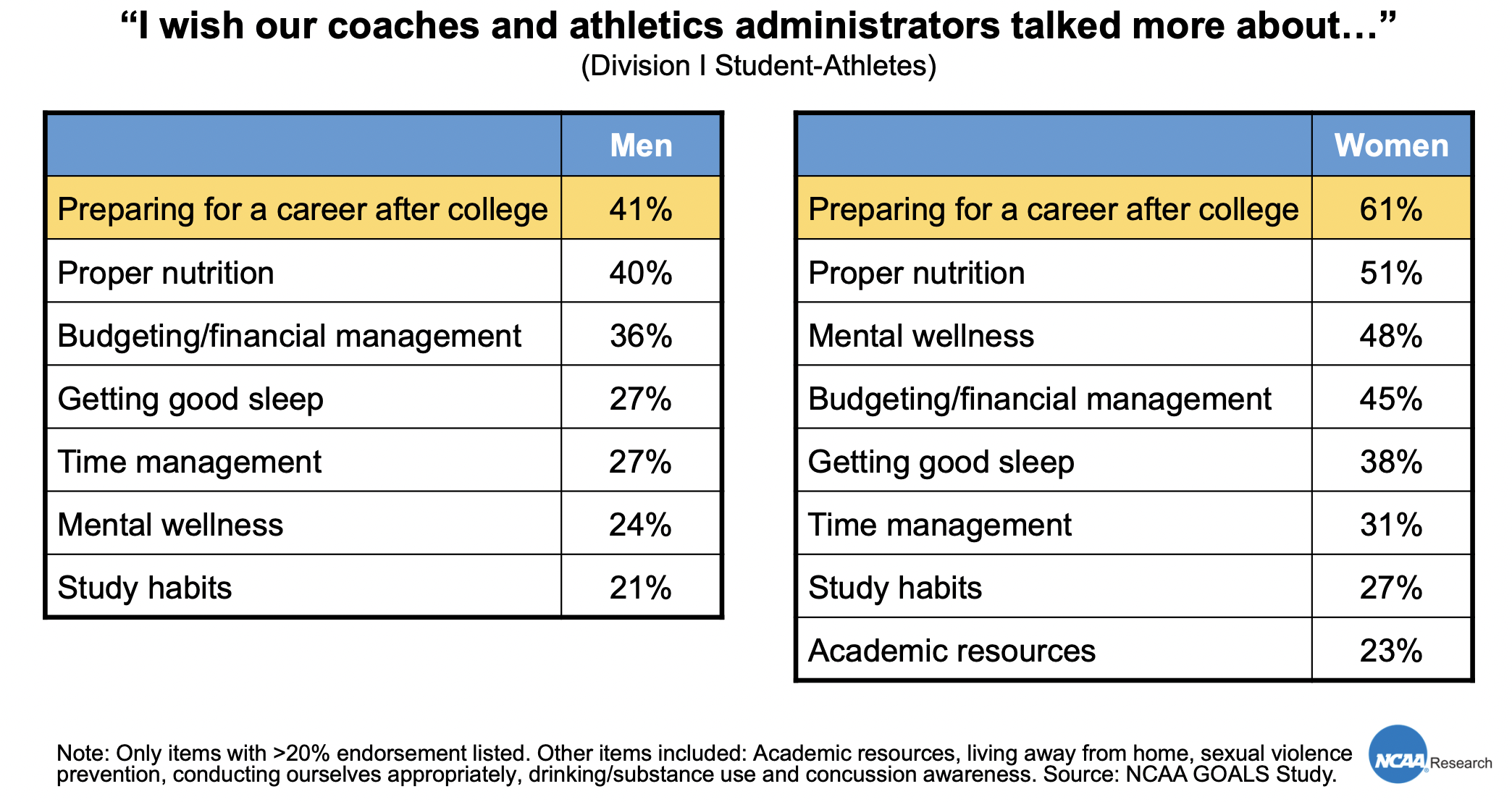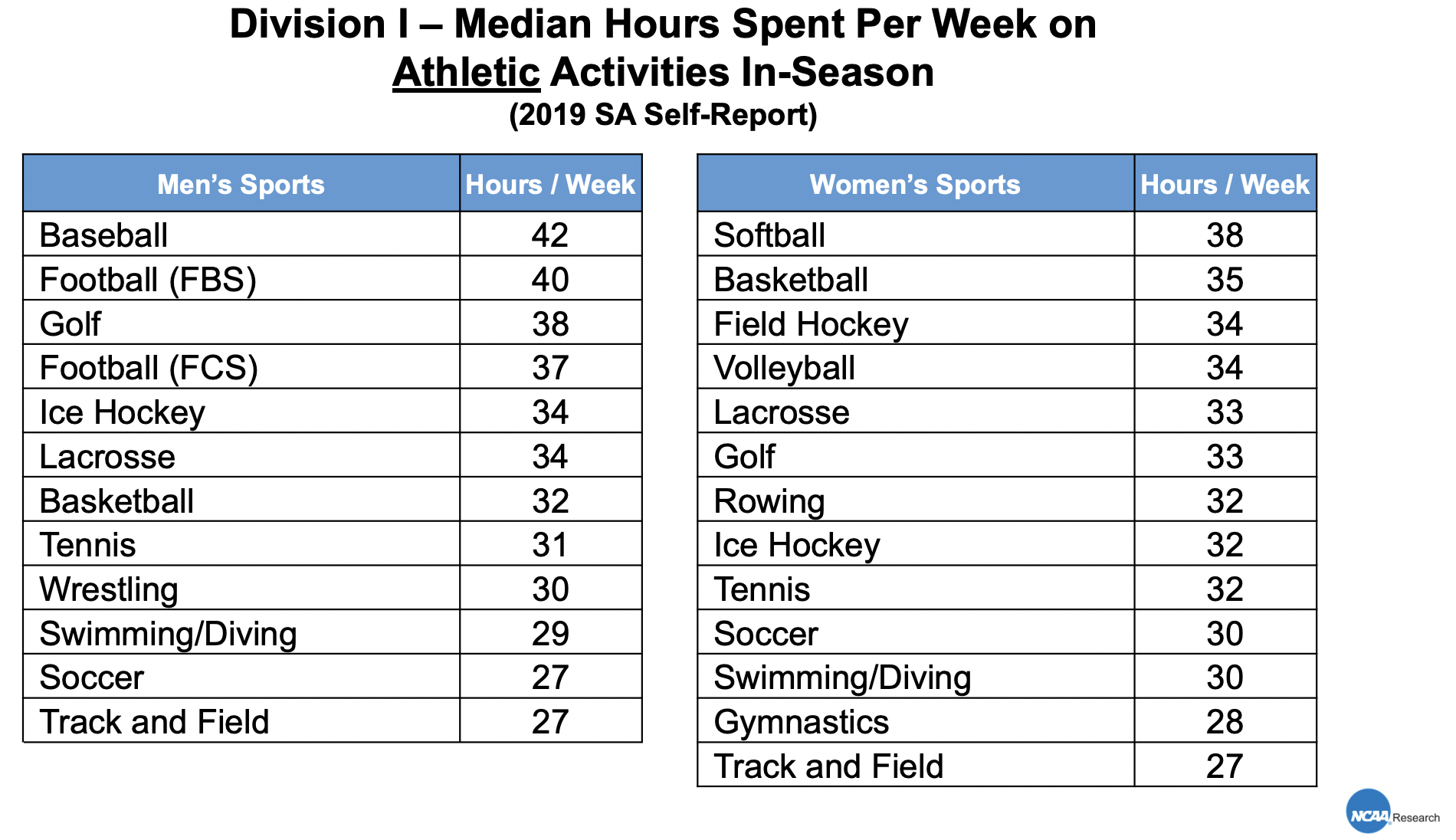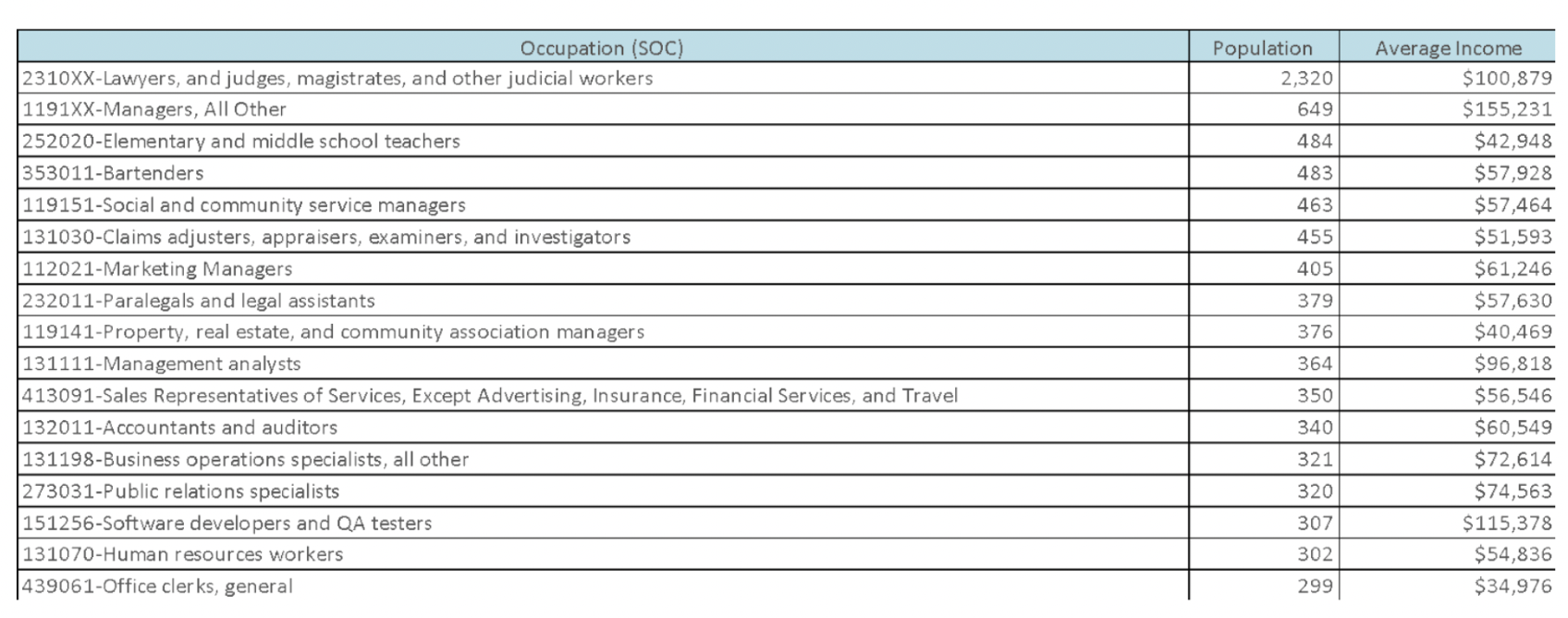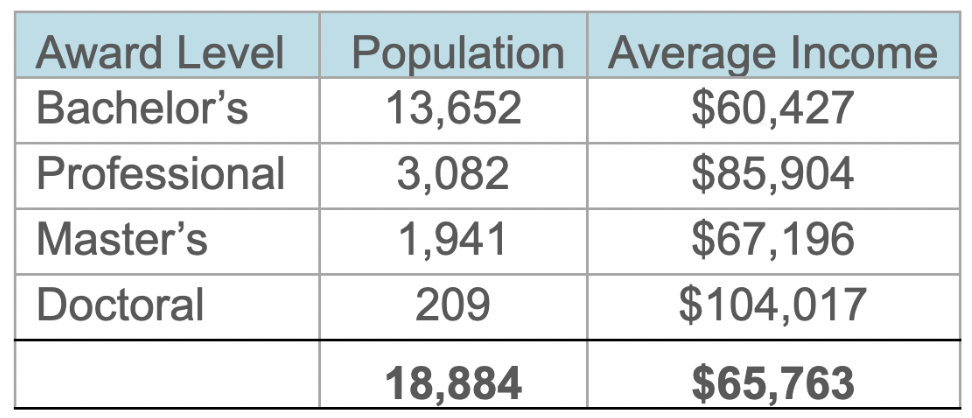Student-athletes contribute to college life on and off the field. At many institutions, they graduate at higher rates and earn higher GPAs than average – and excel in their sport. How do you attract athletes to your school when so many others may be competing to win these student-athletes?
In a recent NCAA GOALS Study, male and female Division I student-athletes cited preparation for a career after college as the top item they wished their coaches and athletic administrators talked more about (see table below). Communication about career preparation was in higher demand than proper nutrition and sleep, mental wellness, and financial matters.

Source: https://www.ncaa.org/sports/2013/11/20/ncaa-goals-study.aspx
Time Spent on Athletics
Student-athletes make great sacrifices of their time and talents. Below are the weekly hours that Division I student athletes spent per week on athletic activities during the season, listed by sport and gender. These hours were self-reported as part of a 2019 study by NCAA Research.

Source: https://www.ncaa.org/sports/2013/11/20/ncaa-goals-study.aspx
Connection with Potential Employers
Schools can connect student-athletes with potential employers. Enterprise Holdings Inc. is the largest car rental company in the world. It partners with Athlete Network, an athlete engagement software service. Through its partnership, Athlete Network gives Enterprise Holdings access to more than 500 university athletic departments and enables it to network with current and former student-athletes throughout the US.
“Our entrepreneurial culture and focus on teamwork are particularly attractive to former student athletes. In turn, athletes’ leadership experience, work ethic, time management skills, and ability to work as part of a team translate well to our business and our culture.”
– Marie Artim, Vice President of Global Talent Acquisition at Enterprise Holdings (source: prnewswire.com)
Career Advising
Schools can help their student-athletes make informed decisions in preparation for careers after college. Schools can start by looking at the academic programs taken by student-athletes in recent years to get a snapshot of popular majors. For example, according to oneclass.com, Political Science is the top major for student-athletes at UCLA. With this knowledge, UCLA could provide data on likely jobs for Political Science majors. Be careful to use a data supplier that does not depend on the NCES crosswalks to align academic programs with jobs; these crosswalks miss hundreds of occupations that graduates really go into. Instead, look for data drawn from the American Community Survey (ACS), part of the US Census, which asks graduates what their major was, what job they are doing, and how much money they make.
Gray’s Program Evaluation System (PES) uses ACS to estimate the number of jobs available to a graduate in a given major. The example below shows an illustration with the following parameters:
- Political Science & Government, General academic program (CIP code 41.1001)
- State of California
- Age group 25-29 (this is the youngest age range available)
Population and Average Income by Occupation:
 Source: Gray’s analysis of US Census, American Community Survey
Source: Gray’s analysis of US Census, American Community Survey
This shows a wide range of potential occupations available to people in the early stages of their careers who live in California and have a Political Science degree. The most popular occupation for this group is lawyers, judges, magistrates, and other judicial workers, with over 2,300 in the current population. Of course, some of these jobs will require graduate education. Their average income exceeds $100,000.
Population and Average Income by Award Level

Source: Gray’s analysis of US Census, American Community Survey
Most Political Science majors (72%) have attained a bachelor’s degree and have an average income of $60,427. For the entire population of 18,884 in this group, the average income is $65,763.
To address student-athletes’ desire for post-collegiate career guidance, schools should track their academic program enrollment and completions. For each of the top academic programs, information can be compiled about the occupations available to people attaining these degrees. One such source of this information is Gray DI’ PES+ Market Dashboards. Providing this information to student-athletes can set them up for success as future alumni.




